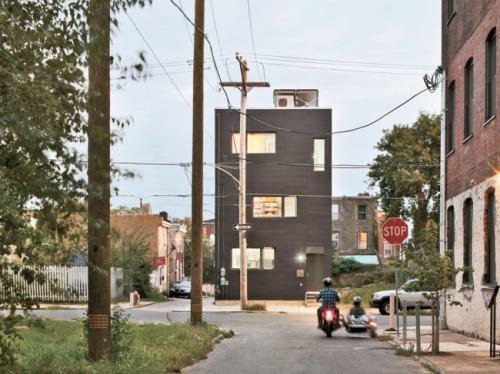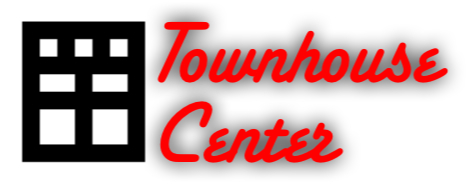
From GreenSource writer David Sokol: "As it experiences its first population growth in decades, Philadelphia is undergoing another wave of rowhouse construction. Contextual yet decidedly modern compositions are filling the gaps and derelict spaces between the city's existing rowhouses. "'The rowhouse typology is very much relevant and alive today, although the essence of it has evolved over time,' says architect Louis Chang, whose firm, Fishtank PHL, has completed approximately 25 rowhouse units since its inception in 2009.
"A survey of finished and upcoming developments illustrates how the current incarnation of this building type includes all points in the income spectrum. Last year, the Philadelphia Housing Authority opened the new Norris Apartments, a 51-unit mixed-income project that qualifies as the authority's first LEED-certified project. Other projects target higher-end consumers, including the modularly constructed rental North 28 and the green-roofed, geothermally heated Weccacoe Flats. The Icehouse earned LEED Platinum and Gold ratings for its first phase with a scheme by Continuum Architecture.
"'Rowhouses are a great place to test innovations, especially in order to achieve optimum building performance', Chang says, pointing to Fishtank's custom rainscreen on its Red House project as an example. Philadelphia is 'a remarkable lab', agrees Interface Studio Architects (ISA) founder Brian Phillips. ISA's recent series of LEED-certified houses in the subsidized Sheridan Street project for Asociación Puertorriqueños en Marcha is further evidence of the rowhouse as a medium for experimenting with a green agenda.
"ISA's longstanding collaboration with the local developer Postgreen translates its affordable right-sizing of urban homes to the private sector. ISA created 100K House, prototype designs that aim for the namesake construction price by limiting geometry to the simplest forms, cladding the plain boxes in only one material, and embracing the square footages of the average American house of yore. Since the first two 100Ks were completed in early 2009, Postgreen has built many more versions.
"'Philly is a city of modest incomes. Making super-green infill houses takes fundamental advantage of site conditions but also puts money in people's pockets', Phillips says.
"Tim McDonald, who, with his brother Patrick, founded the firm Onion Flats in 1997, expands upon these fundamental advantages. 'The row just makes sense on so many levels: spatial and energy efficiency; affordability; our interest in dense, walkable urban communities; simplicity in construction. We also love the challenge that these thin slices of urban space offer us as architects.'
"The company also uses sustainable rowhouses to refine its maverick approach to project delivery. Two recently completed three-unit projects, the subsidized Belfield Townhomes and the first phase of a private development called the Stables, are fabricated by a patent-pending modular construction system and achieve net zero capability.
"Scalability is what catapults an interesting local phenomenon to the national stage. Success in the City of Brotherly Love promises to lower the barriers to creative green housing everywhere." Full article here.
